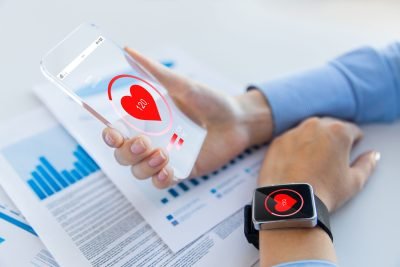Introduction
Wearable technology has come a long way from just tracking steps. Today, wearables are changing the healthcare industry by providing actionable insights and facilitating preventative measures. This article explores 10 key ways in which wearables are revolutionizing healthcare.
Section I: Basic Applications
1. Fitness Tracking
One of the most basic yet impactful applications of wearables in healthcare is fitness tracking. Devices can measure steps, heart rate, and sleep patterns, helping users make informed decisions about their health.
2. Remote Monitoring
Wearable devices enable healthcare professionals to remotely monitor vital statistics like heart rate and blood pressure. This is especially useful for elderly patients and those with chronic conditions.
3. Medication Reminders
Smartwatches and other wearable devices can be programmed to remind users to take their medication. This simple feature can significantly improve medication adherence rates, leading to better treatment outcomes.
Section II: Intermediate Applications
4. Emergency Response Systems
Some wearables come equipped with emergency response systems that can send alerts to medical professionals or family members if a health crisis is detected. This feature is particularly useful for individuals with chronic conditions or those at risk of falls.
5. Chronic Disease Management
Wearables can help in the self-management of chronic diseases like diabetes by monitoring glucose levels. These devices can send real-time data to healthcare providers for more timely and effective interventions.
6. Mental Health Support
Wearable devices can also support mental health by tracking indicators like stress levels, sleep patterns, and even biofeedback data. This information can be invaluable for healthcare providers in treating mental health conditions.
7. Post-operative Care and Recovery
After surgical procedures, wearable devices can monitor wound healing, measure biometrics, and even detect signs of infections. This information allows healthcare providers to adjust post-operative care plans accordingly.
Section III: Advanced Applications
8. Predictive Analytics
Advanced wearables are now capable of predictive analytics, using AI algorithms to anticipate potential health issues before they become critical. This can be particularly beneficial for preemptive care and reducing hospital admissions.
9. Virtual Health Assistants
Some wearables integrate virtual health assistants that can offer immediate advice based on the health data they collect. These virtual assistants can guide the user on everything from medication intake to symptoms that may require immediate attention.
10. Telemedicine Integration
Wearables can seamlessly integrate with telemedicine platforms, allowing healthcare providers to offer more comprehensive remote consultations based on real-time data from the wearable devices.
Conclusion
Wearable technology is not just a trend but a significant advancement in healthcare. From basic fitness tracking to complex predictive analytics, wearables offer a wide range of applications that are revolutionizing healthcare as we know it.

